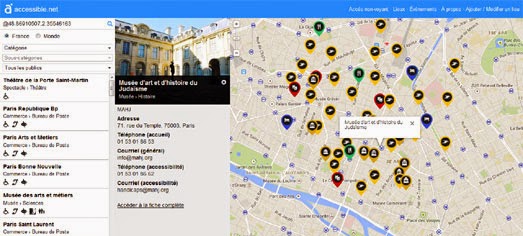Сообщения
Сообщения за февраль, 2015
Berlin in Incredible 3d
- Получить ссылку
- X
- Электронная почта
- Другие приложения
Mapping Wheelchair Accessibility
- Получить ссылку
- X
- Электронная почта
- Другие приложения
The White and Gold Dress Map
- Получить ссылку
- X
- Электронная почта
- Другие приложения
The Tokyo Metro in 3d
- Получить ссылку
- X
- Электронная почта
- Другие приложения
Visualizing Ten Years of OpenStreetMap
- Получить ссылку
- X
- Электронная почта
- Другие приложения
Animated Heat Maps of Weather Data
- Получить ссылку
- X
- Электронная почта
- Другие приложения
US River Mapping
- Получить ссылку
- X
- Электронная почта
- Другие приложения
The New York Time Machine
- Получить ссылку
- X
- Электронная почта
- Другие приложения
Mapping African Democracy
- Получить ссылку
- X
- Электронная почта
- Другие приложения
Mapping Shrinking Glaciers
- Получить ссылку
- X
- Электронная почта
- Другие приложения
Google Paper Maps of Europe
- Получить ссылку
- X
- Электронная почта
- Другие приложения
3d Art View of the World
- Получить ссылку
- X
- Электронная почта
- Другие приложения
Map in GeoHipster Blue
- Получить ссылку
- X
- Электронная почта
- Другие приложения
Iceland's Rival to Street View
- Получить ссылку
- X
- Электронная почта
- Другие приложения
The Race a Tiger Map
- Получить ссылку
- X
- Электронная почта
- Другие приложения
Animated Hurricane Maps
- Получить ссылку
- X
- Электронная почта
- Другие приложения
The Militarization of the Police
- Получить ссылку
- X
- Электронная почта
- Другие приложения
The Street Pews of Ireland
- Получить ссылку
- X
- Электронная почта
- Другие приложения
The Oscars Twitter Map
- Получить ссылку
- X
- Электронная почта
- Другие приложения
The Very Best Maps of the Week
- Получить ссылку
- X
- Электронная почта
- Другие приложения
The Oscar for Best Map goes to ....
- Получить ссылку
- X
- Электронная почта
- Другие приложения
All the Presidents' Maps
- Получить ссылку
- X
- Электронная почта
- Другие приложения
Tourists vs Locals in Bangkok
- Получить ссылку
- X
- Электронная почта
- Другие приложения
Where Americans Watch Movies
- Получить ссылку
- X
- Электронная почта
- Другие приложения
Mapping Instagram
- Получить ссылку
- X
- Электронная почта
- Другие приложения
Animated Flights on 3d Globes
- Получить ссылку
- X
- Электронная почта
- Другие приложения
Where Bears Fans Live
- Получить ссылку
- X
- Электронная почта
- Другие приложения
Europe isn't Dying, It's Aging
- Получить ссылку
- X
- Электронная почта
- Другие приложения


























